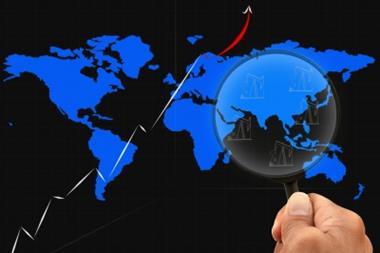Danial Cummins, general manager of SafetyCulture Care in Australia, discusses practical tips for SMEs to help reduce their physical risks and improve the safety of their frontline workers.
In 2017, a factory fire completely destroyed a clothing warehouse, along with half-a-million dollars worth of stock. The suspected cause was timber pallets leaning precariously on a wall outside.
Thankfully nobody was harmed, but could it have been prevented?

The most common insurance claims and how to avoid them
In his role as General Manager for SafetyCulture Care in Australia, Danial Cummins has just about seen it all when it comes to insurance claims made by businesses each year.
“We can actually learn a lot about prevention by looking at some of the most common insurance claims being made by businesses, and combining the types of checks businesses do,” he says.
“Most of the claims we saw from small and medium businesses were related to property, machinery and equipment breakdown, theft and burglary, and business interruption”
“These insights help identify where businesses should focus, based on people like them in their industry.”
“In the past year, most of the claims we saw from small and medium businesses were related to property, machinery and equipment breakdown, theft and burglary, and business interruption”, Cummins adds, “regardless of the size and quantum of the claim, this can have a devastating impact on SMEs.”
With this in mind, how can people start to run a better, safer business?
Property – Protect your assets
With the introduction of artificial intelligence (AI) in the insurance space, Cummins suggests a way to revolutionise insurance.
That is, by adopting new and emerging tech solutions that can be used to mitigate risk and prevent property claims – particularly for retail and manufacturing businesses.
“Say you have AI capability through surveillance footage that says your pallets need to be four meters away from walls,” he explains, “this can help predict, prevent, and avoid devastating incidents we’ve seen in the past, like the fire that destroyed the 43,000-square-foot warehouse and all its contents.”
”Business owners don’t know what they don’t know and, as an industry, we need to move from loss protection to risk prevention.”
Effectively using AI within this space would require pulling data from 30,000 previous risk recommendations from SMEs.
He adds: “From there, we’d be able to make specific recommendations businesses can do to help prevent an insurance claim. Business owners don’t know what they don’t know and, as an industry, we need to move from loss protection to risk prevention.
“This is our opportunity to do more for our customers. AI will further increase insurance adoption and benefit customers to run a better, safer business.”
Machinery and equipment breakdown – Monitor your machines
Machinery breakdown is a common problem and can result in significant financial losses if not addressed quickly. This can include regular maintenance and monitoring of key assets in your business to prevent stock deterioration and equipment breakdown.
“About one-third of hospitality claims relate to machinery breakdown, particularly in small business. If you remove coffee machines, that’s mostly fridges, freezers, and cold-storage units,” Cummins says.
If a cold-storage unit or freezer breaks down, this can lead to food spoilage and stock loss, causing significant financial losses.
It can also lead to the potential loss of customers through the unavailability of stock – not to mention the health and safety risks.
“About one-third of hospitality claims relate to machinery breakdown, particularly in small business.”
“If the breakdown is not detected, and a customer consumes the spoiled food and gets food poisoning, that could become very costly for a business, not just from an insurance perspective,” Cummins adds.
A way to mitigate this type of risk is to use temperature and humidity sensors in fridges, freezers, and cold-storage units. This way, businesses can monitor their facilities to ensure optimal conditions for their products.
This can help prevent stock loss due to spoilage, and comply with health and safety regulations.
As technology becomes more affordable, the small cost of a temperature and humidity sensor can protect valuable stock and prevent a significant loss.
Theft and burglary – Secure your business
Theft and burglary can significantly impact a business by causing financial losses through stolen assets or damaged property.
Additionally, it can harm the business’s reputation and cause customers to lose trust in their ability to keep the property safe.
In retail environments, there are countless accounts of break-ins. Many of these break-ins happen due to simple mistakes, like leaving doors and windows unlocked, or making a property easily accessible.
“Have you locked up, turned off the power, turned off lights, or checked the toilets to make sure no one was in there?”
A simple solution to mitigating this risk is a small investment in security (e.g. alarms, deadlocks, surveillance cameras) to protect your business.
Cummins says: “It’s really about remembering the basics. Simple things are often the most effective in deterring thieves.
”Like using reminders or checklists for securing your property at the end of the day – have you locked up, turned off the power, turned off lights, or checked the toilets to make sure no one was in there? And having adequate interior and exterior lighting.”
He adds that it’s quite common for a business to make a second and third theft claim within a six-month period. Once burglary has occurred at a property, it’s important to understand and update security to prevent further incidents from occurring. The data says they’re likely to come back.
Business interruption and loss of income – Prepare for the unexpected
In the world of insurance, business interruption refers to the interruption of normal business operations and activities due to unexpected insured events or circumstances.
This type of disruption has increased in recent years.
Cummins says: “With the recent climate change activity and significant catastrophic events across Australia, we’ve seen an increase in business interruption claims due to flood, fire, or cyclone, leaving businesses cut off from their customers
“Having a business continuity plan and understanding what could go wrong helps you future-proof the longevity of your business.”
”We’ve seen an increase in business interruption claims due to flood, fire, or cyclone, leaving businesses cut off from their customers”
Keeping your business trading during and after an incident, recovering operations more quickly after interruptions, reducing costs and duration of any disruption, and mitigating risks and financial exposure are all benefits of having a business-continuity plan.
If a shop in a high-traffic location typically makes a large number of weekly sales – but a major disruption has diverted many potential shoppers – it could easily find itself making only a quarter of those sales.
Cummins says: “If that kind of business had a continuity plan to prepare for the unexpected, along with business interruption cover, it would minimise the impact and exposure to recover quicker.”
Time for change
Risk managers must commit to reprioritising health, safety, and training practices for their people.
Cummins concludes: “Some of these tips may seem straightforward. However, we continue to see the same types of avoidable claims being made, year after year.
“On average, SMEs take seven minutes to complete an inspection within their business. These regular checks help identify potential risks… build visibility to what could go wrong, so you can ultimately help run a better, safer business.”




















No comments yet